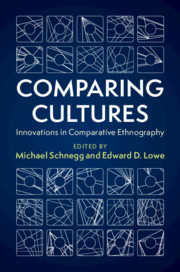Book contents
- Comparing Cultures
- Comparing Cultures
- Copyright page
- Contents
- Figures
- Tables
- Contributors
- Introduction
- Part I Binary Comparisons
- Part II Regional Comparisons
- 4 The Comparison of Structures and the Comparison of Systems
- 5 Regional Comparison in Historical Anthropology
- 6 Scaling Ethnography Up
- Part III Distant and Fluid Comparisons
- Index
- References
5 - Regional Comparison in Historical Anthropology
Three Case Examples from South Arabia
from Part II - Regional Comparisons
Published online by Cambridge University Press: 08 May 2020
- Comparing Cultures
- Comparing Cultures
- Copyright page
- Contents
- Figures
- Tables
- Contributors
- Introduction
- Part I Binary Comparisons
- Part II Regional Comparisons
- 4 The Comparison of Structures and the Comparison of Systems
- 5 Regional Comparison in Historical Anthropology
- 6 Scaling Ethnography Up
- Part III Distant and Fluid Comparisons
- Index
- References
Summary
While regional comparison’s methodological relevance is diminishing, its significance for historical anthropology may increase if properly assessed and reconfigured. This chapter argues this point by discussing three examples from historical South Arabia. These cases highlight the significance of adequately reflecting and identifying existing notions of the “regional” in any given research context as the basic frame of reference in this version of comparison. As a crucial device from science studies and critical theory, the distinction between contexts of discovery, of justification, and of application may be useful for a reliable yet open and flexible conceptualization that includes self-reflexive as well as indigenous notions of the regional. It is also suggested that regional comparison can be improved by triangulating it with other methodological devices, ranging from network analysis to medium-range insights from general anthropology. In turn, this may advance the operational usefulness of regional comparison in historical anthropology by strengthening its potential for highlighting both regional commonalities and diversities among the phenomena under scrutiny.
Keywords
- Type
- Chapter
- Information
- Comparing CulturesInnovations in Comparative Ethnography, pp. 117 - 132Publisher: Cambridge University PressPrint publication year: 2020
References
- 1
- Cited by

